
Ant
Ant
Ant
Ants are everywhere in our daily lives, but there are still many things about them that are not yet known. Like us humans, ants form groups and build societies to act. Let’s explore the secrets of these interesting ants together!
Ant Basic Infomation
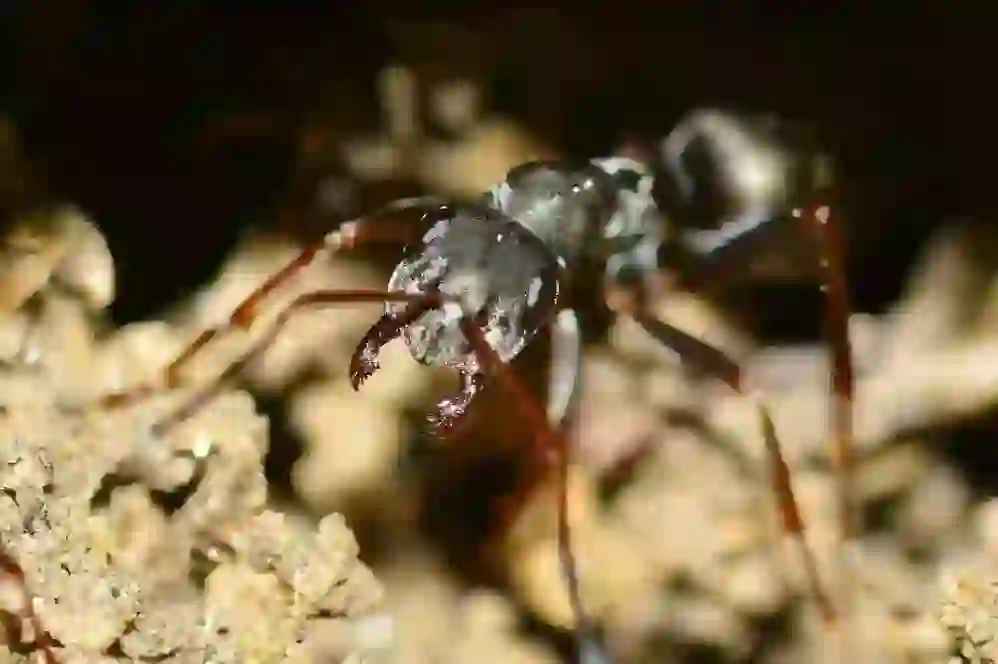
Hymenoptera-Formicidae.
Length:About 1 to 30 mm.Wide range depending on the type.
Ants live all over the world! They can live in places like deserts, grasslands, forests, and even in your backyard.
Ants are said to be social insects, with males and females with wings born to breed and ants without wings collecting food.
Have you ever heard of working ants or queen ants? Ants with wings that are not queen ants become male ants.
Ants are insects that lay eggs. They live in families called colonies centered around queen ants.
To become a family, you need to get married, right? Ants also get married. They have a wedding ceremony in the sky. This is called a nuptial flight and is characterized by mating in the air.
There are about 300 species of ants in Japan and more than 300,000 species have been confirmed worldwide. The variety of species is also a great attraction of ants. Just as each human family has its own preferences and foods, ants also have different preferences and foods depending on the species.
Ant Q&A

What do ants eat?
Ants eat various things depending on the species. They eat small fruits, larger insects than themselves, mushrooms, flowers, honeydew from aphids or trees.
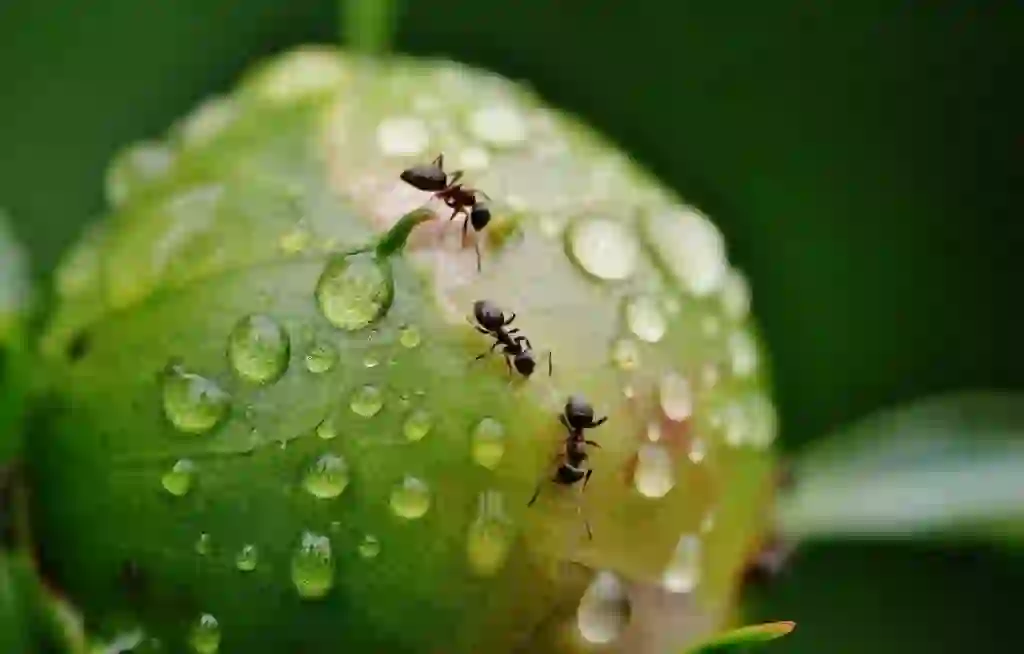
What is the difference between ants and bees?
Actually, ants are part of the bee family! As the name suggests, ants are similar to bees and are sometimes called bees that have chosen to walk the earth.
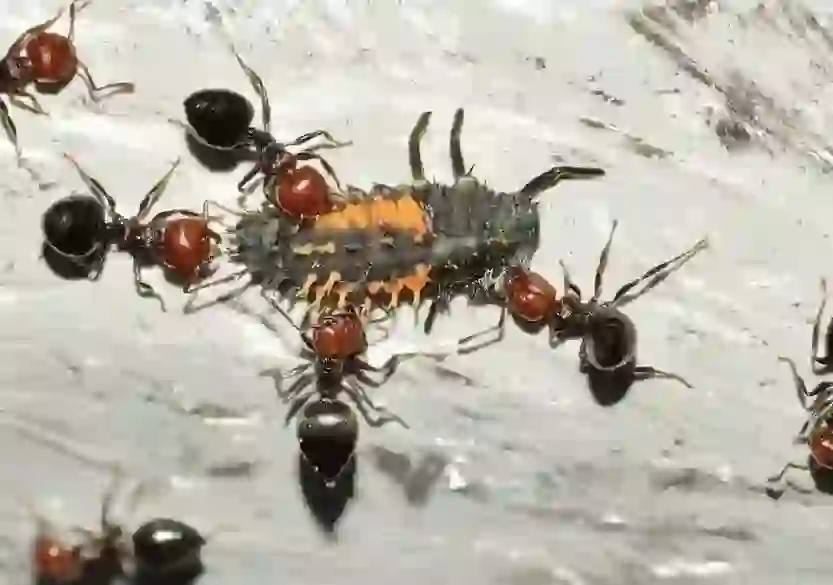
Don't worker ants slack off?
They slack off. Not all working ants work hard.
Some ants bring a lot of food and some ants don’t work at all. Even the most capable ants get tired and need to rest. At that time, the ant that was slacking off earlier seems to take over for the tired ant and move efficiently to collect food.
"It’s okay to take a break. I’ll do the rest."
Working ants might have such a conversation.
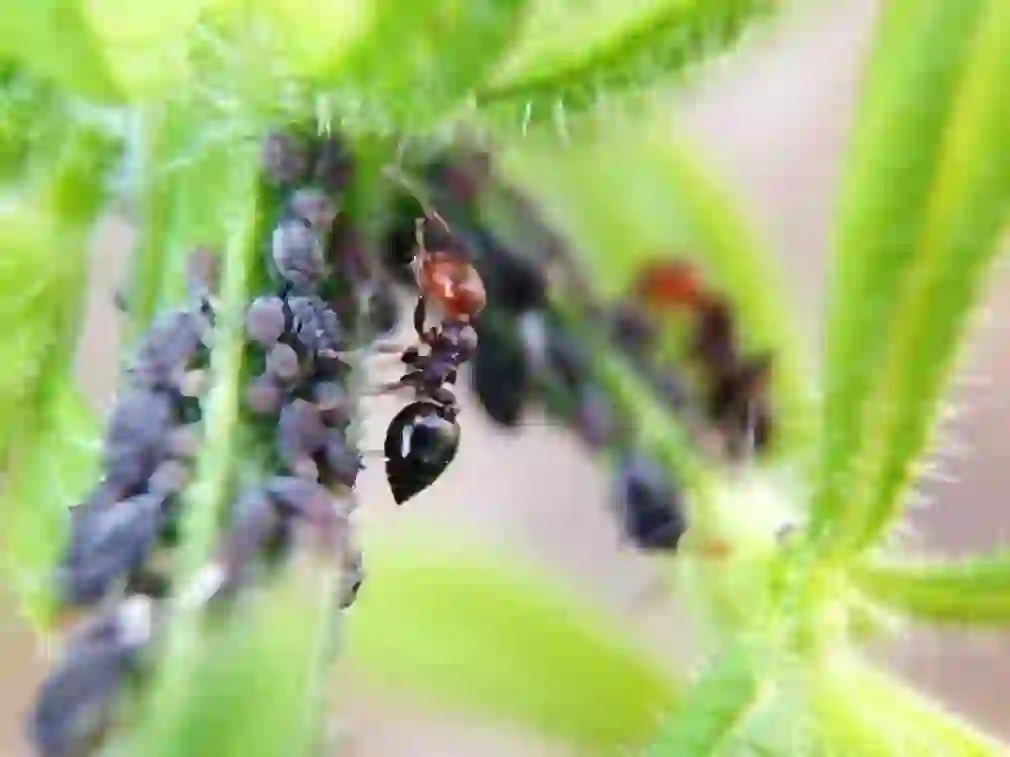
Can ants be eaten?
Yes. Ants are eaten by some animals.
Anteaters, larvae of dobsonflies, spiders, frogs and others eat ants.
It seems that ants also eat ants. You know the ants that carry dead ants? That’s probably…
And surprisingly, there are ants that specialize in eating ants. Ants are also desperate to survive.

Is it true that there are ants who love home appliances?
Yes. It’s true.
Ants of the species called yellow crazy ants and blue ants, which are small ants about 2mm long, can invade indoors and enter home appliances from gaps in the appliances. I don’t know if they like electromagnetic waves or warm places, but they often cause malfunctions by invading home appliances.
If small ants come out indoors and disappear in no time, they may be nesting in your nearby home appliances. Are ants poisonous?
Not all species have poison, but some ants do. Ants that have poison include the hiari ant, which is a representative species of ants with poison that has been talked about in the world. Do you know that hiari is written in kanji as “fire ant”?
In addition, ants may protect themselves from external enemies by emitting an acid called formic acid from their buttocks. Formic acid is a sour liquid like vinegar. It makes you lose your appetite.

Do ants sometimes eat people?
Japanese ants do not have such scary ants.
However, there are scary ants overseas. Army ant companions form a mobile colony while performing a large march called "Death Carpet". After this carpet-like march of ants has passed, there will be no life. These ants are so ferocious that even large cows can be reduced to bones.
As a torture of war, there is a thing that people are tied up in the path of this army ant, and there seems to be a story that it has become a skeleton in a day. Very scary!
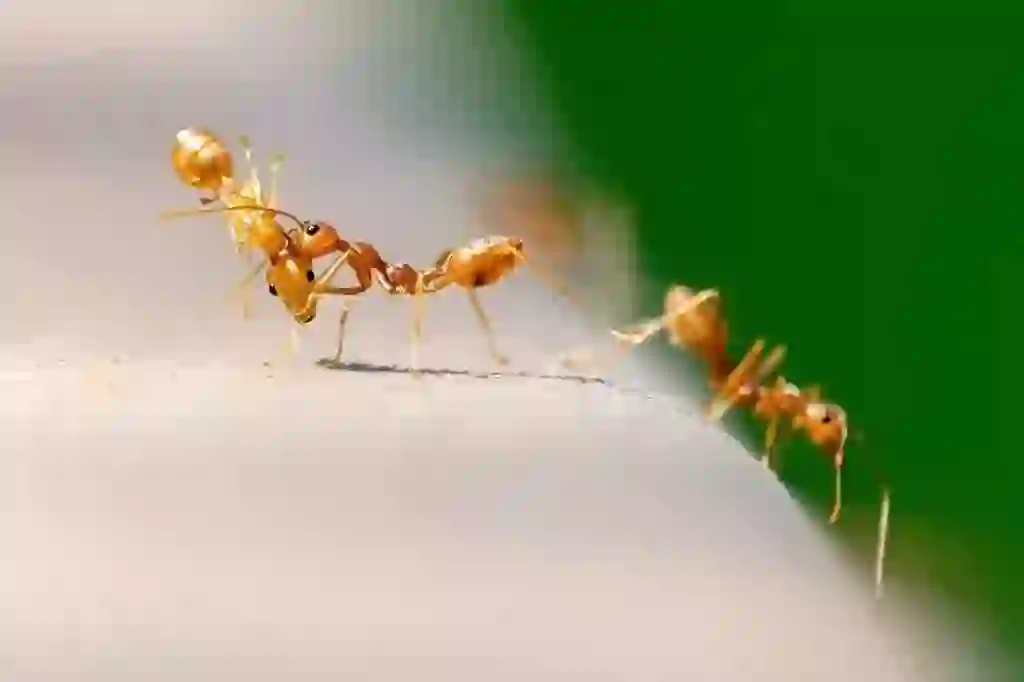
Is it true that male ants die as soon as they get married?
Yes. That’s true.
Male ants become breeding-only ants born only for the purpose of getting married. When they can meet a female through a marriage flight, they pass a sperm capsule to the female. The female carefully stores the capsule in her body and flies out to a new land alone. There, she sheds her wings that look like a wedding dress and builds a nest to produce her own family. The queen ant can produce worker ants and new generations of male and female ants with the sperm capsule she received and the eggs she produces.
She raises the children of her loved ones throughout her life. It’s kind of romantic.
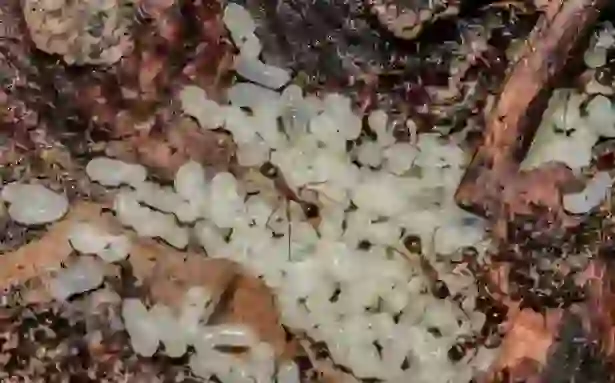
Do ants get along well with each other?
Ants of different species never get along.
Slave-making ants attack Japanese wood ant nests and carry away eggs and young cocoons. And the Japanese wood ant born after being taken away by the Slave-making ant is made to work as a slave of the Slave-making ant as a worker ant who collects food such as food for the rest of its life. Forced labor ant, isn’t it? Slave-making ants are clever and seem to purposely leave nests alive instead of wiping them out. Because you can create new slaves by doing things like this…it's a scary world.
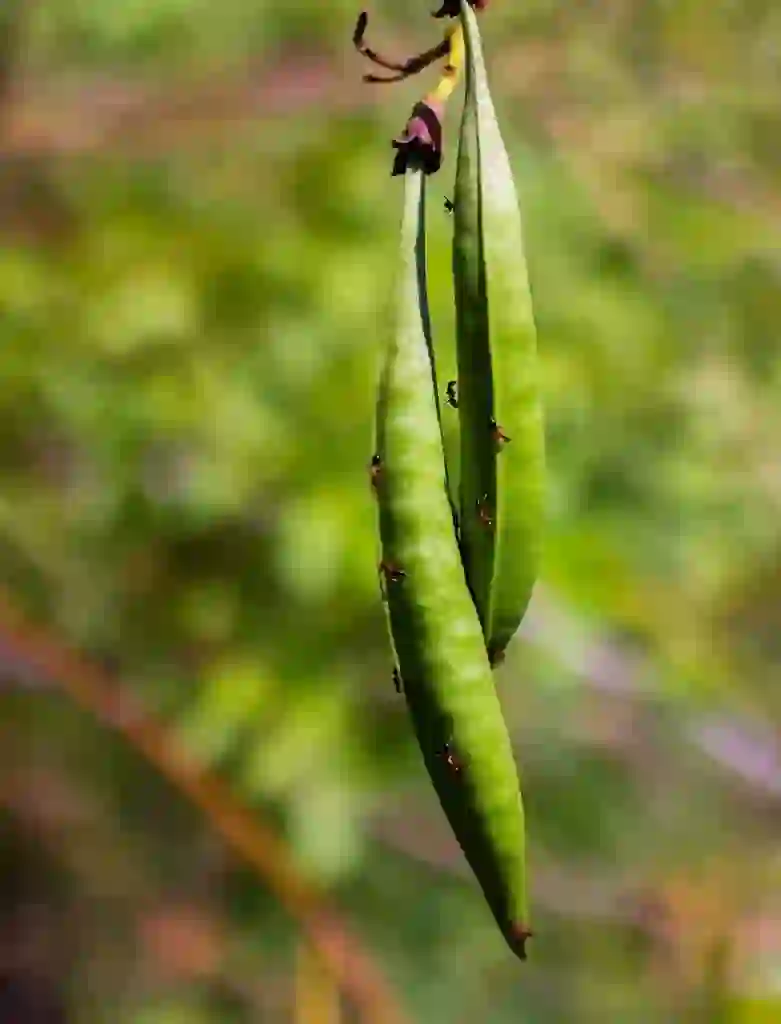
Are termites ants?
No. That’s incorrect. Termites are actually part of the cockroach family. Although they look similar to ants, it’s unfair to call them “house-eating termites”. Some ants even like to eat termites.
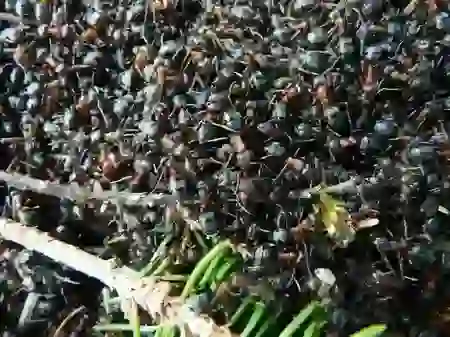
Is it true that ants do farming?
Yes. It’s true.
Leaf-cutter ants cut leaves and carry them back to their nests. They cultivate mushrooms in their nests and use them as their main food source. It’s clear that ants are intelligent creatures that not only carry things to eat directly, but also carry things back to use.

Is it true that there are ants that self-destruct?
Yes. It’s true.
There is an ant called Kamikaze ants that stores formic acid in its large abdomen. When an enemy comes, it raises its butt high. And when it is attacked by an enemy… Bang! Its abdomen bursts and it sprays formic acid on the opponent. It’s not a species found in Japan, but there are many interesting ants in the world.

Would you like to become a part of the 'Animalbook.jp'?
Turn your knowledge into Q&A and share it with the world. ※Publication will be activated after purchase. Let's share information together!
Ant Type of List

Etc.
- Aenictus ceylonicus.
- Aenictus lifuiae.
- Amblyopone caliginosa.
- Amblyopone fulvida.
- Amblyopone sakaii.
- Amblyopone silvestrii.
- Cerapachys biroi.
- Cerapachys daikoku.
- Cerapachys hashimotoi.
- Cerapachys humicola.
- Dolichoderus sibiricus.
- Linepithema humile.
- Ochetellus glaber.
- Tapinoma melanocephalum.
- Tapinoma sp. 3.
- Technomyrmex brunneus.
- Technomyrmex gibbosus.
- Acropyga kinomurai.
- Acropyga nipponensis.
- Acropyga sauteri.
- Acropyga yaeyamensis.
- Anoplolepis gracilipes.
- Brachymyrmex sp.1.
- Camponotus albosparsus.
- Camponotus amamianus.
- Camponotus bishamon.
- Camponotus daitoensis.
- Camponotus devestivus.
- Camponotus friedae.
- Camponotus hemichlaena.
- Camponotus itoi.
- Camponotus japonicus.
- Camponotus kaguya.
- Camponotus keihitoi.
- Camponotus kiusiuensis.
- Camponotus monju.
- Camponotus nawai.
- Camponotus nipponensis.
- Camponotus nipponicus.
- Camponotus obscuripes.
- Camponotus ogasawarensis.
- Camponotus quadrinotatus.
- Camponotus sachalinensis.
- Camponotus shohki.
- Camponotus vitiosus.
- Camponotus yamaokai.
- Camponotus yambaru.
- Camponotus yessensis.
- Camponotus sp.6.
- Formica candida.
- Formica fukaii.
- Formica gagatoides.
- Formica hayashi.
- Formica japonica.
- Formica lemani.
- Formica sanguinea.
- Formica truncorum.
- Formica yessensis.
- Lasius alienus.
- Lasius capitatus.
- Lasius flavus.
- Lasius fuji.
- Lasius hayashi.
- Lasius hikosanus.
- Lasius japonicus.
- Lasius meridionalis.
- Lasius nipponensis.
- Lasius orientalis.
- Lasius productus.
- Lasius sakagamii.
- Lasius sonobei.
- Lasius spathepus.
- Lasius talpa.
- Lasius umbratus.
- Paratrechina amia.
- Paratrechina flavipes.
- Paratrechina longicornis.
- Paratrechina nubatama.
- Paratrechina ogasawarensis.
- Paratrechina otome.
- Paratrechina ryukyuensis.
- Paratrechina sakurae.
- Paratrechina yaeyamensis.
- Paratrechina yambaru.
- Paratrechina sp. 11.
- Plagiolepis alluaudi.
- Plagiolepis flavescens.
- Polyergus samurai.
- Polyrhachis dives.
- Polyrhachis lamellidens.
- Polyrhachis latona.
- Polyrhachis moesta.
- Prenolepis sp.
- Anomalomyrma sp.
- Leptanilla japonica.
- Leptanilla kubotai.
- Leptanilla morimotoi.
- Leptanilla oceanica.
- Leptanilla tanakai.
- Leptanilla sp. 6
- Protanilla sp. 1
- Aphaenogaster concolor.
- Aphaenogaster gamagumayaa.
- Aphaenogaster donann.
- Aphaenogaster edentula.
- Aphaenogaster erabu.
- Aphaenogaster famelica.
- Aphaenogaster gracillima.
- Aphaenogaster irrigua.
- Aphaenogaster japonica.
- Aphaenogaster kumejimana.
- Aphaenogaster luteipes.
- Aphaenogaster minutula.
- Aphaenogaster osimensis.
- Aphaenogaster rugulosa.
- Aphaenogaster tipuna.
- Aphaenogaster tokarainsulana.
- Cardiocondyla kagutsuchi.
- Cardiocondyla minutior.
- Cardiocondyla obscurior.
- Cardiocondyla wroughtonii.
- Cardiocondyla sp.6.
- Carebara borealis.
- Carebara hannya.
- Carebara oni.
- Carebara sauteri.
- Carebara yamatonis.
- Crematogaster matsumurai.
- Crematogaster nawai.
- Crematogaster osakensis.
- Crematogaster suehiro.
- Crematogaster teranishii.
- Crematogaster vagula.
- Crematogaster sp.5.
- Leptothorax acervorum.
- Lordomyrma azumai.
- Manica yessensis.
- Messor aciculatus.
- Monomorium chinense.
- Monomorium destructor.
- Monomorium floricola.
- Monomorium hiten.
- Monomorium intrudens.
- Monomorium latinode.
- Monomorium pharaonis.
- Monomorium sechellense.
- Monomorium triviale.
- Myrmecina amamiana.
- Myrmecina flava.
- Myrmecina nipponica.
- Myrmecina ryukyuensis.
- Myrmica jessensis.
- Myrmica kotokui.
- Myrmica kurokii.
- Myrmica luteola.
- Myrmica onoyamai.
- Myrmica rubra.
- Myrmica taediosa.
- Myrmica sp. 7.
- Myrmica sp. 8.
- Pheidole fervens.
- Pheidole fervida.
- Pheidole indica.
- Pheidole megacephala.
- Pheidole noda.
- Pheidole parva.
- Pheidole pieli.
- Pheidole ryukyuensis.
- Pheidole susanowo.
- Pheidologeton diversus.
- Pristomyrmex brevispinosus.
- Pristomyrmex punctatus.
- Pyramica alecto.
- Pyramica benten.
- Pyramica canina.
- Pyramica circothrix.
- Pyramica hexamera.
- Pyramica hirashimai.
- Pyramica hiroshimensis.
- Pyramica incerta.
- Pyramica japonica.
- Pyramica kichijo.
- Pyramica leptothrix.
- Pyramica masukoi.
- Pyramica mazu.
- Pyramica membranifera.
- Pyramica morisitai.
- Pyramica mutica.
- Pyramica rostrataeformis.
- Pyramica sauteri.
- Pyramica terayamai.
- Recurvidris recurvispinosa.
- Rhopalomastix omotoensis.
- Solenopsis geminata.
- Solenopsis japonica.
- Solenopsis tipuna.
- Stenamma nipponense.
- Stenamma owstoni.
- Strongylognathus koreanus.
- Strumigenys emmae.
- Strumigenys exilirhina.
- Strumigenys godeffroyi.
- Strumigenys kumadori.
- Strumigenys lacunosa.
- Strumigenys lewisi.
- Strumigenys minutula.
- Strumigenys solifontis.
- Strumigenys stenorhina.
- Strumigenys strigatella.
- Temnothorax anira.
- Temnothorax antera.
- Temnothorax arimensis.
- Temnothorax basara.
- Temnothorax bikara.
- Temnothorax congruus.
- Temnothorax haira.
- Temnothorax indra.
- Temnothorax kinomurai.
- Temnothorax koreanus.
- Temnothorax kubira.
- Temnothorax makora.
- Temnothorax santra.
- Temnothorax spinosior.
- Temnothorax nylanderi.
- Tetramorium bicarinatum.
- Tetramorium kraepelini.
- Tetramorium lanuginosum.
- Tetramorium nipponense.
- Tetramorium simillimum.
- Tetramorium smithi.
- Tetramorium tonganum.
- Tetramorium tsushimae.
- Vollenhovia amamiana.
- Vollenhovia benzai.
- Vollenhovia emeryi.
- Vollenhovia nipponica.
- Vollenhovia okinawana.
- Vollenhovia sakishimana.
- Vollenhovia yambaru.
- Anochetus shohki.
- Cryptopone sauteri.
- Cryptopone tengu.
- Diacamma sp.
- Hypoponera beppin.
- Hypoponera schauinslandi.
- Hypoponera gleadowi.
- Hypoponera nippona.
- Hypoponera nubatama.
- Hypoponera opaciceps.
- Hypoponera sauteri.
- Hypoponera zwaluwenburgi.
- Leptogenys confucii.
- Odontomachus monticola.
- Odontomachus kuroiwae.
- Pachycondyla chinensis.
- Pachycondyla darwinii.
- Pachycondyla javana.
- Pachycondyla luteipes.
- Pachycondyla pilosior.
- Pachycondyla sakishimensis.
- Ponera bishamon.
- Ponera japonica.
- Ponera kohmoku.
- Ponera scabra.
- Ponera swezeyi.
- Ponera takaminei.
- Ponera tamon.
- Ponera yakushimensis.
- Discothyrea kamiteta.
- Discothyrea sauteri.
- Probolomyrmex longinodus.
- Probolomyrmex okinawensis.
- Proceratium itoi.
- Proceratium japonicum.
- Proceratium morisitai.
- Proceratium watasei.
- Tetraponera attenuata.
- Colobopsis saundersi.
Information
Congratulations! You are the first commenter!

Create Your Favorite List!
Ant
Save the animals you love! Build your own list to quickly revisit your favorites later.

Would you like to leave a comment?
※Please note: This is for the purchase of rights to post comments within the article.
Find Your Favorites!
Our shop offers a unique and attractive selection of goods themed around various animals.
Ant References
Ant Introduction of media used
出典:https://pixabay.com/videos/id-27120/

出典:https://pixabay.com/images/id-827787/

出典:https://pixabay.com/images/id-1414875/
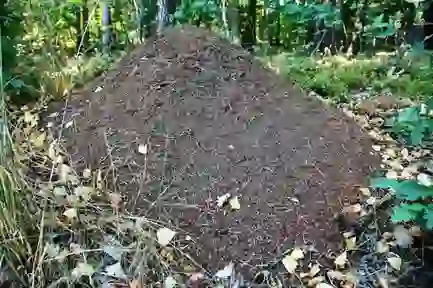
other
出典:https://pixabay.com/images/id-2654517/

出典:https://pixabay.com/images/id-563288/

出典:https://pixabay.com/images/id-1379893/

出典:https://pixabay.com/images/id-5454814/

出典:https://pixabay.com/images/id-5060451/
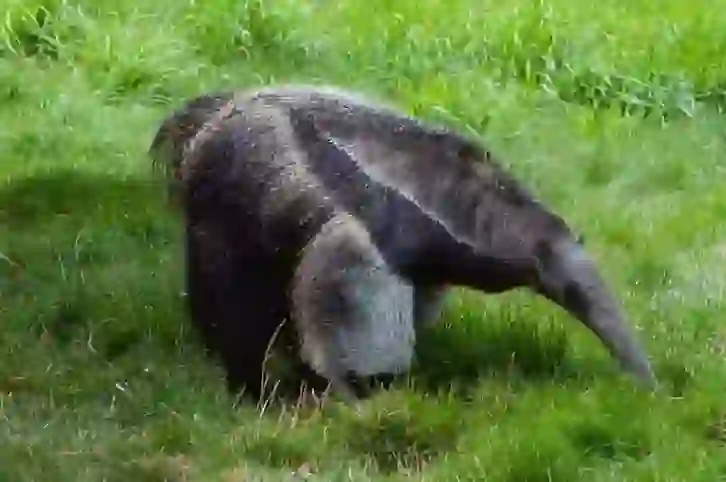
enemy
出典:https://pixabay.com/images/id-4423584/
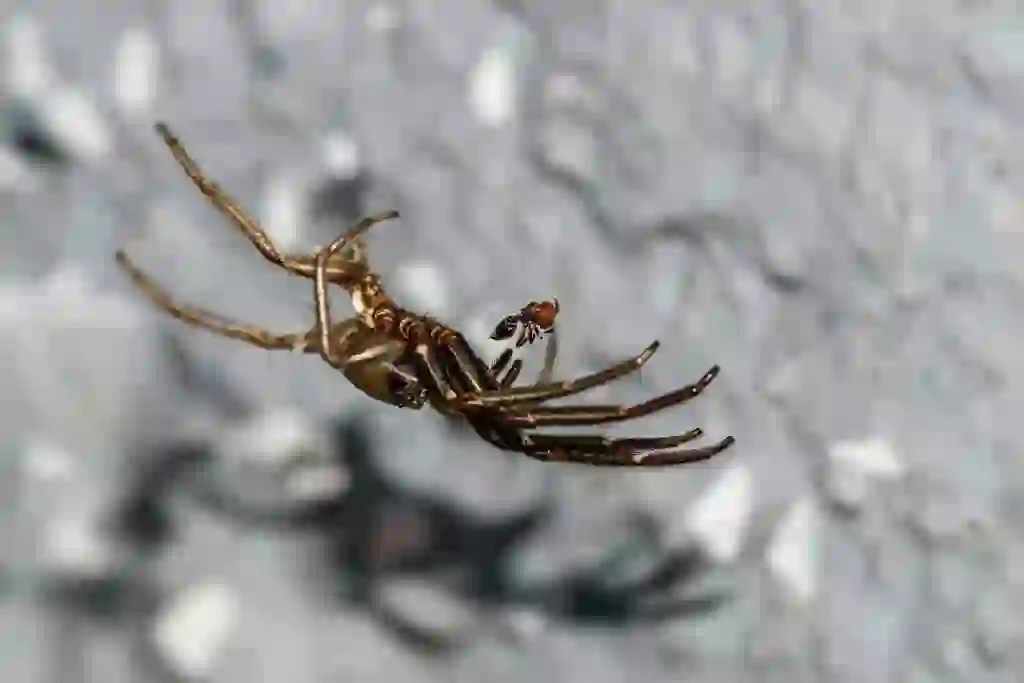
enemy
出典:https://pixabay.com/images/id-1525655/

出典:https://pixabay.com/images/id-2705309/

出典:https://pixabay.com/images/id-3132519/

出典:https://pixabay.com/images/id-4475273/

出典:https://pixabay.com/images/id-3961/

出典:https://pixabay.com/images/id-2652868/
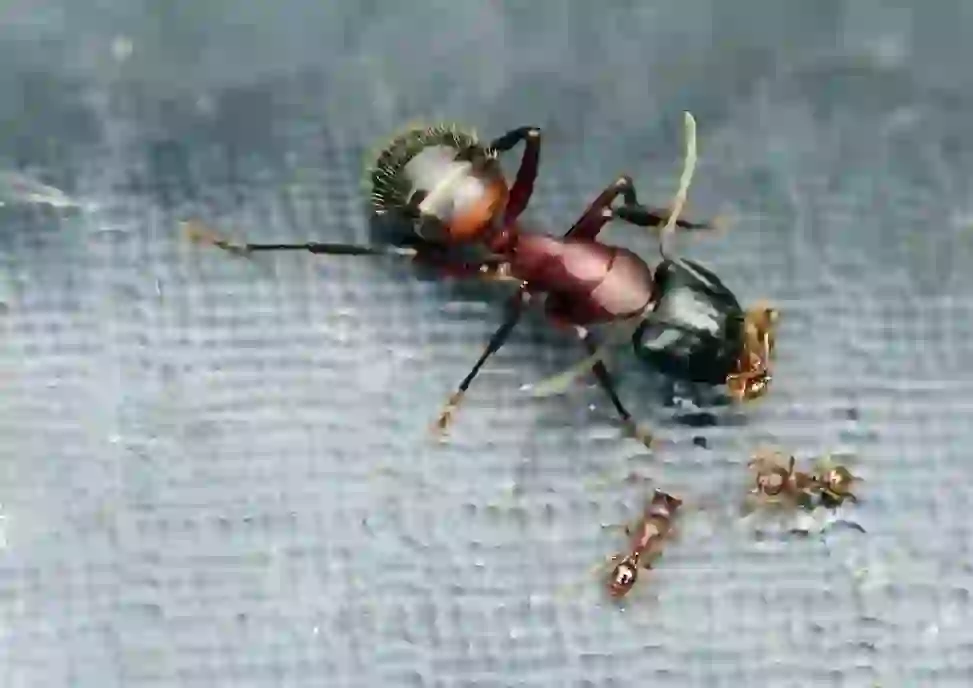
出典:https://pixabay.com/images/id-4899498/
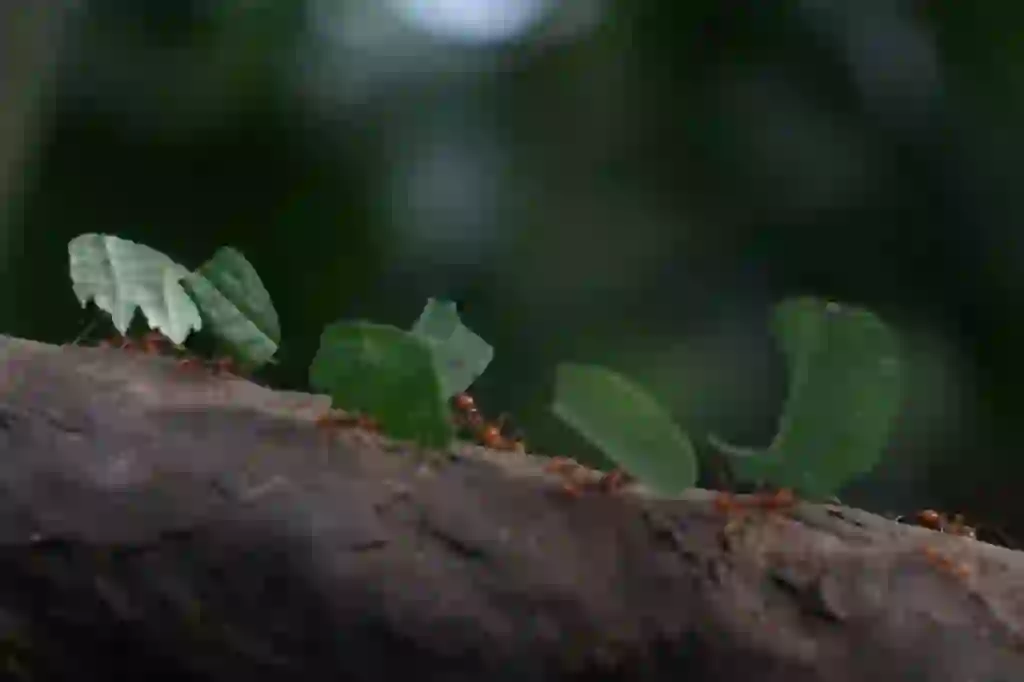
出典:https://pixabay.com/images/id-4887532/

Help Enrich Our Animalbook.jp with Your Media!
We are constantly looking to expand and enrich our Animalbook.jp with amazing photos and videos of animals. If you have any media that you'd like to share, please contribute and help us showcase the beauty and diversity of the animal kingdom. Your submissions will be credited and featured in our encyclopedia, reaching a wide audience of animal lovers.


















